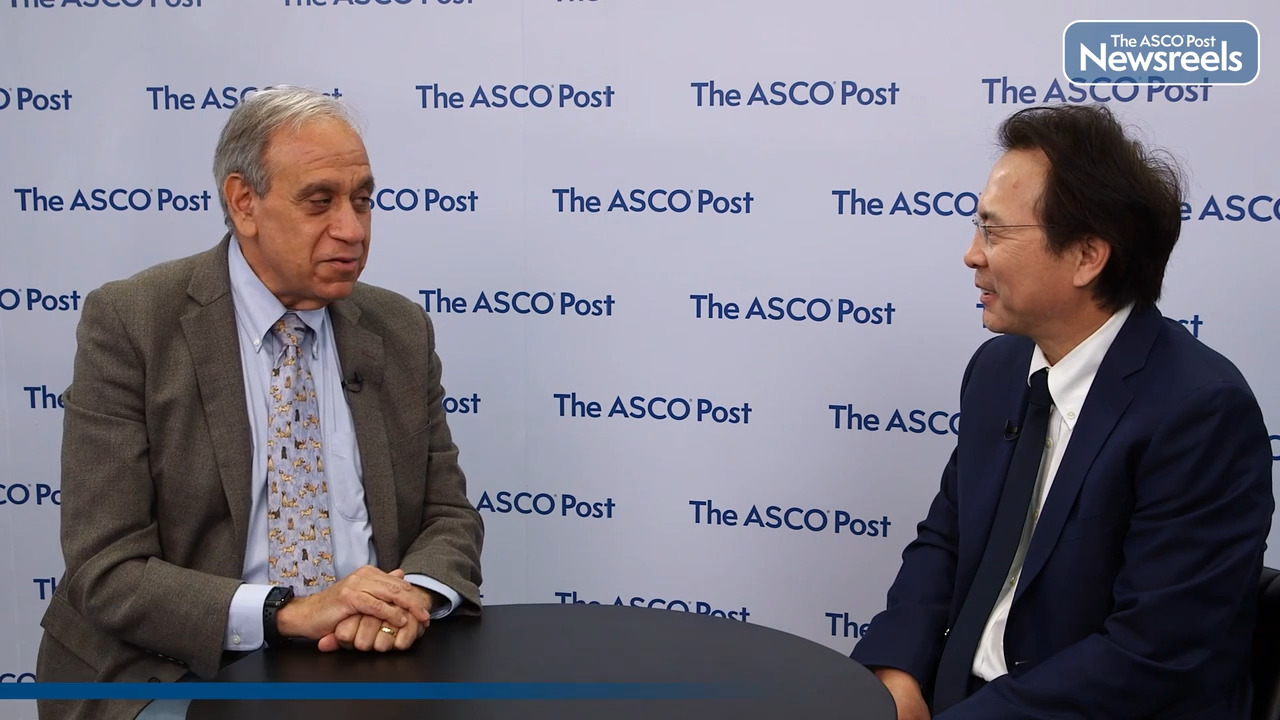Tara B. Sanft, MD, on How Diet and Exercise May Affect Completion of Chemotherapy for Breast Cancer
2022 ASCO Annual Meeting
Tara B. Sanft, MD, of Yale University, discusses the results of the LEANer study (Lifestyle, Exercise, and Nutrition Early After Diagnosis) in women with breast cancer. It showed that patients with newly diagnosed disease who were just starting chemotherapy could improve physical activity and diet quality. While both groups had high rates of treatment completion, women in the intervention who exercised at or above the recommended levels did better in terms of treatment completion, with fewer dose reductions and delays (Abstract 12007).
Transcript
Disclaimer: This video transcript has not been proofread or edited and may contain errors.
We know completing chemotherapy as prescribed is important for cancer outcomes. We also know that adopting healthy diet and exercise is important, both for cancer prevention and, in certain cancers, can improve cancer-related survival. The healthy diet and exercise guidelines include eating a predominantly plant-based diet and exercising with moderate intensity exercise at least 150 minutes per week, and performing two strength training sessions per week. Our study, the Lifestyle, Exercise, and Nutrition Study, randomized women who were not meeting these guidelines to a healthy diet and exercise intervention based on the Diabetes Prevention Protocol and adapted using the cancer-related guidelines as well versus usual care, which is referral to our survivorship clinic and dieticians and exercise programs at request by the patient. Our primary outcome was looking at the relative dose intensity, or the actual amount of chemotherapy received compared to that which was prescribed. The intervention group received a year-long intervention of 16 sessions administered by a registered dietician who was certified, specialized in oncology, and also had exercise counseling training. The control group were followed at baseline post-chemotherapy. What we found was that both groups completed chemotherapy at very high rates, with both groups approaching about 93% completion rates. This is higher than what we had found in the literature before. We also found that the number of dose delays and reductions were similar between the two groups. When we looked at the intervention group, in particular, and we looked at if they were meeting the actual recommendations, that is 150 minutes per week and a high consumption of fruits and vegetables, we found that women who were able to meet these guidelines or exceeded them, did have higher completion rates compared to those who didn't quite make those guidelines. So in summary, the women who made the highest number of changes or adhered the best did have better relative dose intensity and fewer dose reductions and delays. But when we took the entire intervention group and compared them to usual care, we did not find a statistically significant difference. In summary, both groups completed their chemotherapy as prescribed most of the time, and the intervention group significantly improved both their diet and physical activity during the course of the intervention. Those who were able to adopt the exercise and diet recommendations the best did have significant improvements in their completion rates and fewer dose reductions and delays compared to those who didn't adopt it as well.
Related Videos
The ASCO Post Staff
Eunice S. Wang, MD, of Roswell Park Comprehensive Cancer Center, discusses long-term phase II findings of a trial evaluating crenolanib plus chemotherapy in newly diagnosed adults with FLT3-mutant acute myeloid leukemia. The study showed a composite complete remission rate of 86%. With a median follow-up of 45 months, median overall survival has not been reached. A phase III trial is ongoing (Abstract 7007).
The ASCO Post Staff
Akihiro Ohba, MD, of Japan’s National Cancer Center Hospital, discusses phase II data from the HERB trial on fam-trastuzumab deruxtecan-nxki, which showed activity in patients with HER2-expressing unresectable or recurrent biliary tract cancer (Abstract 4006).
The ASCO Post Staff
Andrew D. Zelenetz, MD, PhD, of Memorial Sloan Kettering Cancer Center, and Michael L. Wang, MD, of The University of Texas MD Anderson Cancer Center, discuss primary results from the phase III SHINE study, which showed that ibrutinib, in combination with bendamustine/rituximab and rituximab maintenance, may set a new benchmark for patients aged 65 or older with mantle cell lymphoma. With a median progression-free survival of 6.7 years, the ibrutinib combination is more beneficial than currently used chemoimmunotherapy (approximately 1.5–3.5 years) (Abstract LBA7502).
The ASCO Post Staff
Alicia K. Morgans, MD, MPH, of Dana-Farber Cancer Institute, and Michael S. Hofman, MBBS, of Peter MacCallum Cancer Centre, University of Melbourne, discuss follow-up results on LuPSMA vs cabazitaxel in patients with metastatic castration-resistant prostate cancer progressing after docetaxel treatment. The findings suggest that LuPSMA is a suitable option for this population, with fewer adverse events, higher response rates, improved patient-reported outcomes, and similar overall survival compared with cabazitaxel (Abstract 5000).
The ASCO Post Staff
Thomas Powles, MD, PhD, of Barts Health NHS Trust, Queen Mary University of London, and Jonathan E. Rosenberg, MD, of Memorial Sloan Kettering Cancer Center, discuss the 24-month findings from the phase III EV-301 trial, which suggest that enfortumab vedotin-ejfv continues to show a significant and consistent survival advantage over standard chemotherapy in patients with previously treated advanced urothelial carcinoma (Abstract 4516).





